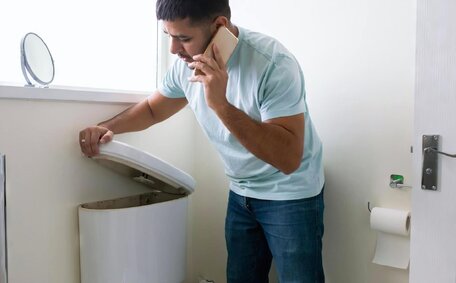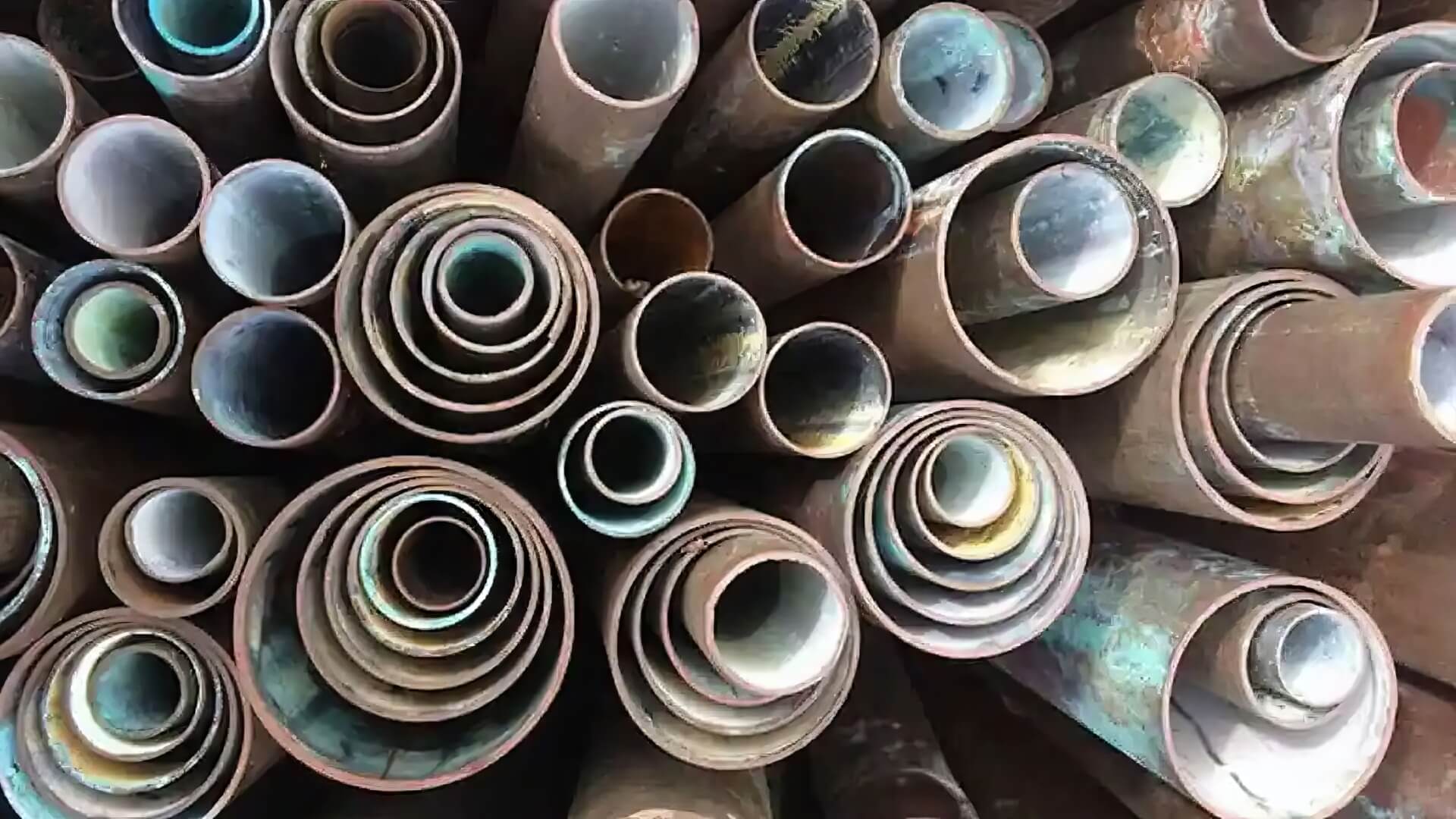
10 Signs Your Hot Water Heater Will Fail
If your water heater is old, leaking, rusty, noisy, not heating water properly or has low pressure, it could fail soon. Get your hot water system inspected today.
Read MoreHomeowners rely on a continuous hot water supply, so when the pilot light on their gas water heater extinguishes, relighting it is usually a straightforward process.
As the leading plumbing company serving Mortdale and surrounding areas in Sydney, the licenced professionals at Mortdale Plumbing have extensive experience troubleshooting gas water heaters and safely relighting pilot lights. We’re available 24/7 at 1300 349 338 to provide assistance whenever your hot water system stops working properly.
The pilot light is a small flame within your water heater that ignites the gas burner whenever hot water is called for.
Safety is paramount when relighting a water heater’s pilot light. Turn off the gas and ventilate the space by opening windows and leaving the room for at least 5 minutes to ensure safety.
If no leaks are found, proceed with caution. Have a working fire extinguisher on hand.
Ensure good ventilation by keeping windows open and avoiding sources of ignition like cigarettes, flames, or sparks near the appliance. Wear gloves and eye protection when working near the pilot light for safety. Proceed with care when relighting the pilot to avoid slips or accidents.
It’s also crucial to follow the manufacturer’s instructions precisely when attempting to relight your water heater’s pilot. If at any point the process seems unsafe or you have doubts, call our licenced professionals at Mortdale Plumbing for assistance.
Before attempting to relight the pilot, it’s essential to turn off the gas supply to the water heater as a safety precaution.
Locate the gas shut-off valve, usually situated on the supply line, either nearby the water heater or close to the outdoor gas meter.
Use an adjustable wrench to turn the valve a quarter-turn clockwise until it is perpendicular to the pipe, halting the gas supply.
If you’re unsure, turn it further until it stops. Then, open a few nearby windows and exit the area for approximately 5-10 minutes. This allows time for any residual gas around the unit to dissipate.
After waiting several minutes, return to the water heater area and sniff near the unit to check that no gas odour is detectable. If any leaks are found, or you smell gas, immediately exit the building and call emergency services or your gas provider.
You may also brush a soapy water solution near pipes and fittings to check for bubbles indicating leaks.
Once you’ve confirmed no leaks or gas smells are present, you can safely proceed with relighting the pilot.
To access the pilot light, you’ll need to open your water heater’s access panel. Carefully remove the panel to avoid sharp edges and set it aside.
Within the open panel, identify the small tube stemming from the gas control valve, marking the pilot light assembly. It consists of the pilot burner tube, thermocouple sensor, and igniter button. The pilot burner tube has a small opening at the end for the pilot flame to exit from. The thermocouple senses the heat from the pilot flame. The igniter button sparks the pilot when pressed.
Take care not to touch or damage any of these components when working inside the access panel. Also confirm that you still do not smell any gas before proceeding further. With the assembly now accessible, you can move to the next step of relighting the pilot.
Turn the gas regulator to 'Pilot’ to regulate the gas flow, preparing it for lighting.
Find the regulator knob, typically located on the gas control valve, and turn it to the setting clearly marked "Pilot." If there is no marking, turn it counterclockwise all the way until you feel it stop.
With one hand on the knob in 'Pilot’ position, press the igniter button with your other hand until the pilot flame ignites.
You may also light pilot by holding a long lighter or burning match near the pilot tube. The pilot flame needs to remain steady during this time. If the pilot goes out when you release the knob, repeat the lighting process.
For older models, after setting the regulator to 'Pilot’, use a long lighter or match to ignite the pilot, holding it by the tube for up to 60 seconds.
If the flame goes out when released, repeat the process. With an older pilot assembly, it make take several attempts before the flame stays lit. If it continually goes out or will not stay lit at all, this likely indicates an underlying issue requiring professional service.
Newer gas water heaters feature electronic pilot ignition. You should hear it sparking.
If it does not ignite after several attempts, or goes out immediately after releasing, there may be a faulty thermocouple or other issue requiring a licenced plumber’s attention. Contact the professionals at Mortdale Plumbing for prompt assistance relighting a problematic pilot.
Manually lighting an older water heater’s pilot light requires care and patience. After setting the gas regulator to “Pilot,” use a long-nose butane lighter or lit match to apply a flame near the pilot burner tube opening. Hold it there steadily for 30-60 seconds until you see the pilot ignite and establish a flame.
Continue holding down the regulator knob during this time to allow gas flow that will stabilise the pilot flame once lit. If the flame goes out when you release the knob, simply repeat the manual lighting process. With an older pilot assembly, it may take several attempts before the flame stays lit.
Exercise caution when manually lighting the pilot, keeping your face and body safely away from the burner tube as you apply the flame. Have a fire extinguisher on hand. If the pilot fails to stay lit after multiple tries, contact our professionals at Mortdale Plumbing right away for assistance.
After setting the gas regulator to “Pilot,” locate the ignition button near the gas control valve. Hold the button down for up to 60 seconds, waiting for the pilot flame to ignite and stay steadily lit. Newer gas water heaters feature electronic pilot ignition systems, eliminating the need for manual lighting.
If the pilot goes out when released, simply repeat the electronic ignition process. Ensure you hear sparking each time you press the button.
Continue to hold the knob after ignition to ensure continuous gas flow, stabilising the pilot light.
If the pilot fails to light or stay lit after several attempts, there may be an underlying issue with the thermocouple sensor or gas control valve. For professional assistance relighting a problematic electronic pilot ignition system, contact the licenced experts at Mortdale Plumbing today.
Once ignited, ensure the pilot light remains lit steadily before considering the task complete. Keep the gas regulator knob depressed for 30-60 seconds, continuing to allow fuel flow to the newly lit pilot.
Monitor the pilot flame to ensure it burns evenly and without interruptions.
The thermocouple sensor will heat up from the flame and send a signal keeping the gas valve open. If the pilot light were to extinguish right after releasing the knob, this indicates a problem with the thermocouple or gas control valve requiring professional service.
However if the pilot fails to stay lit after multiple tries, contact Mortdale Plumbing right away. Our licenced technicians can troubleshoot and repair the pilot assembly so your hot water heater provides reliable service.
A water heater’s pilot light may not ignite or stay lit due to several common factors:
Should these initial troubleshooting steps not rectify the pilot light issues, do not hesitate to consult professionals. The licenced experts at Mortdale Plumbing have extensive experience servicing all makes and models of water heaters to get your hot water flowing again.
While relighting a gas water heater’s pilot light may seem straightforward, there are certain situations when it’s imperative to call a licenced professional for assistance rather than attempting it yourself.
In case you detect a gas odour, observe leak indications or have any safety worries, instantly get in touch with Mortdale Plumbing at 1300 349 338. Our qualified technicians are available 24/7 to respond to emergencies and ensure dangerous gas leaks are addressed.
Further, contact us immediately for issues such as:
Our trained professionals are experts in addressing pilot light problems across diverse water heater models. We can inspect the thermocouple, gas valve, and ventilation to pinpoint the underlying cause and recommend the necessary repairs or part replacements to restore normal appliance operation.
For assistance with challenging water heater pilot issues or any plumbing matter, contact Mortdale Plumbing.
If your water heater is old, leaking, rusty, noisy, not heating water properly or has low pressure, it could fail soon. Get your hot water system inspected today.
Read MoreIf you have plumbing fixtures that are over 10 years old or showing signs of wear like leaks and cracks, it’s important to replace them to prevent more costly water damage in the future. Replacing worn fixtures improves water efficiency.
Read MorePipe relining is a trenchless method that renews pipes from the inside out. It involves draining, drying and scrubbing the pipe interiors before applying materials like silicone, PMMA or epoxy resins to create a resilient, soft, temporary liner inside the existing pipes.
Read MoreMortdale, 2223 NSW
We will call back as soon as possible.




